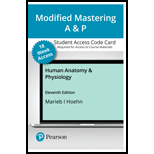
Case summary:
An astronaut, Captain Fallowell had been aboard for 8 months at the international space station He left in the middle of his speech complainingabout the increased heart rate and abnormal blood pressure while standing. Sometimes, he also faces blackouts and dizziness while standing, although his reflexes were normal with no any sign or symptom of head trauma.
Characters in the case:
Captain Fallowell.
Adequate information:
According to the conversation of the two nurses, one of them said, the patient was fit and was just advised for the exercise of 2 hours. The other nurse told about the complications of the patient, that the tissue fluid and blood shifted into the head, and he got skinny legs.
To determine:
The effect of increased circulation of blood in the head and torso on the SNS (sympathetic nervous system), HR (heart rate), and PNS (parasympathetic nervous system).
Given information:
Captain Fallowell’s heart rate was high that is 112 beats per minute during standing and 85 beats per minute while he was lying. Also, the BP (blood pressure) was 94/52 mmHg when he was standing and on lying it was 116/66 mmHg.
Want to see the full answer?
Check out a sample textbook solution
Chapter 19 Solutions
HUMAN ANATOMY + PHYSIOLOGY + MAST AP
- What is behavioral adaptarrow_forward22. Which of the following mutant proteins is expected to have a dominant negative effect when over- expressed in normal cells? a. mutant PI3-kinase that lacks the SH2 domain but retains the kinase function b. mutant Grb2 protein that cannot bind to RTK c. mutant RTK that lacks the extracellular domain d. mutant PDK that has the PH domain but lost the kinase function e. all of the abovearrow_forwardWhat is the label ?arrow_forward
- Can you described the image? Can you explain the question as well their answer and how to get to an answer to an problem like this?arrow_forwardglg 112 mid unit assignment Identifying melting processesarrow_forwardGive only the mode of inheritance consistent with all three pedigrees and only two reasons that support this, nothing more, (it shouldn't take too long)arrow_forward
- Oarrow_forwardDescribe the principle of homeostasis.arrow_forwardExplain how the hormones of the glands listed below travel around the body to target organs and tissues : Pituitary gland Hypothalamus Thyroid Parathyroid Adrenal Pineal Pancreas(islets of langerhans) Gonads (testes and ovaries) Placentaarrow_forward
 Anatomy & PhysiologyBiologyISBN:9781938168130Author:Kelly A. Young, James A. Wise, Peter DeSaix, Dean H. Kruse, Brandon Poe, Eddie Johnson, Jody E. Johnson, Oksana Korol, J. Gordon Betts, Mark WomblePublisher:OpenStax CollegeEssentials of Pharmacology for Health ProfessionsNursingISBN:9781305441620Author:WOODROWPublisher:Cengage
Anatomy & PhysiologyBiologyISBN:9781938168130Author:Kelly A. Young, James A. Wise, Peter DeSaix, Dean H. Kruse, Brandon Poe, Eddie Johnson, Jody E. Johnson, Oksana Korol, J. Gordon Betts, Mark WomblePublisher:OpenStax CollegeEssentials of Pharmacology for Health ProfessionsNursingISBN:9781305441620Author:WOODROWPublisher:Cengage Cardiopulmonary Anatomy & PhysiologyBiologyISBN:9781337794909Author:Des Jardins, Terry.Publisher:Cengage Learning,
Cardiopulmonary Anatomy & PhysiologyBiologyISBN:9781337794909Author:Des Jardins, Terry.Publisher:Cengage Learning, Biology 2eBiologyISBN:9781947172517Author:Matthew Douglas, Jung Choi, Mary Ann ClarkPublisher:OpenStax
Biology 2eBiologyISBN:9781947172517Author:Matthew Douglas, Jung Choi, Mary Ann ClarkPublisher:OpenStax





